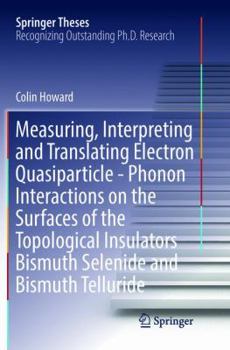Measuring, Interpreting and Translating Electron Quasiparticle - Phonon Interactions on the Surfaces of the Topological Insulators Bismuth Selenide an
Select Format
Select Condition 
Book Overview
1 Introduction
2 Properties of Bi2Se3 and Bi2Te3
2.1 Crystal structure
2.2 Bulk vibrational structure
2.3 Electronic structure
3 Helium atom-surface scattering (HASS)
3.1 The benefits of HASS
3.2 The surface interaction potential
3.3 The kinematics of HASS
3.3.1 Elastic scattering
3.3.2 Inelastic scattering and time-of-flight technique
4 Experimental Apparatus and Technique
4.2 Source chamber
4.3 Target chamber
4.3.1 Production and monitoring of UHV
4.3.2 Sample manipulator
4.3.3 Sample cleaver
4.3.4 Helium detector
5 Pseudocharge phonon model
5.1 Fundamentals of the model
5.2 Adiabatic approximation, ionic self-terms, and PC self-terms
5.3 Bulk parameters
5.4 Surface parameters
6 HASS results from the surface of Bi2Se3 and Bi2Te3
6.1 Elastic and inelastic scattering results
7 Translating between electron and phonon perspectives
7.1 Motivation
7.2 DFQ Self Energy Formalism
7.3 Computational Results
7.4 Additional Supporting Results
8 Conclusion and future directions
8.1 Summary
8.2 Future work
Appendices
A Supplemental material for electron self-energy analysis
A.1 Electron Green's function
A.2 Bosonic sums
B Numerical evaluation of the DFQ self energy
B.1 Hole term
B.1.1 Above Dirac point
B.1.2 Below Dirac point
B.2 Particle term
B.2.1 Above Dirac point
B.2.2 Below Dirac point
B.3 Interband transitions
Curriculum Vitae
Related Subjects
Engineering Science Science & Math Science & Scientists Science & Technology Technology




